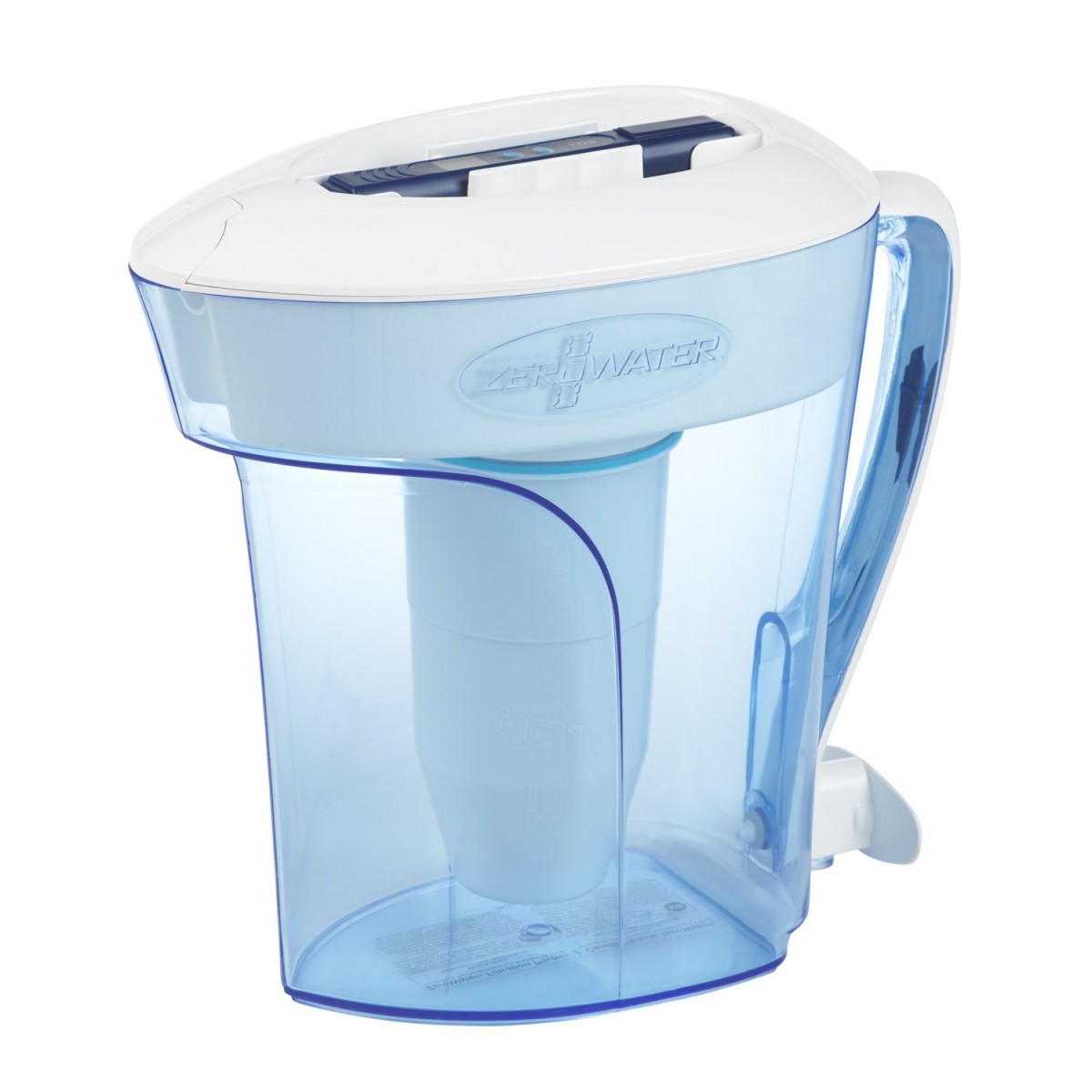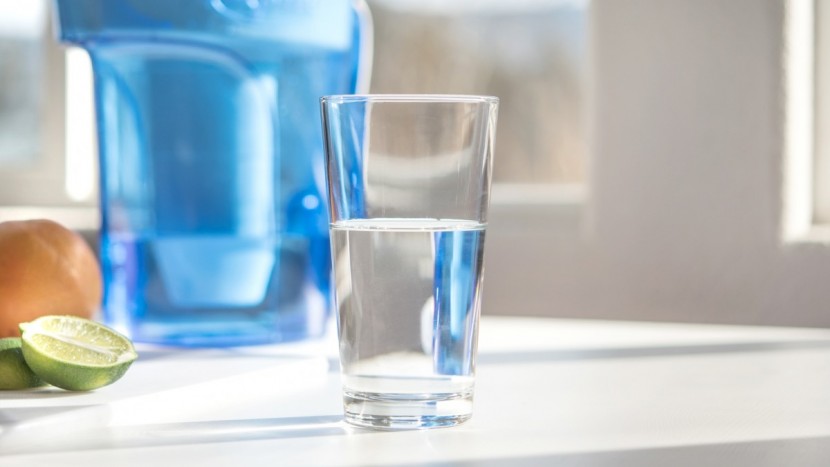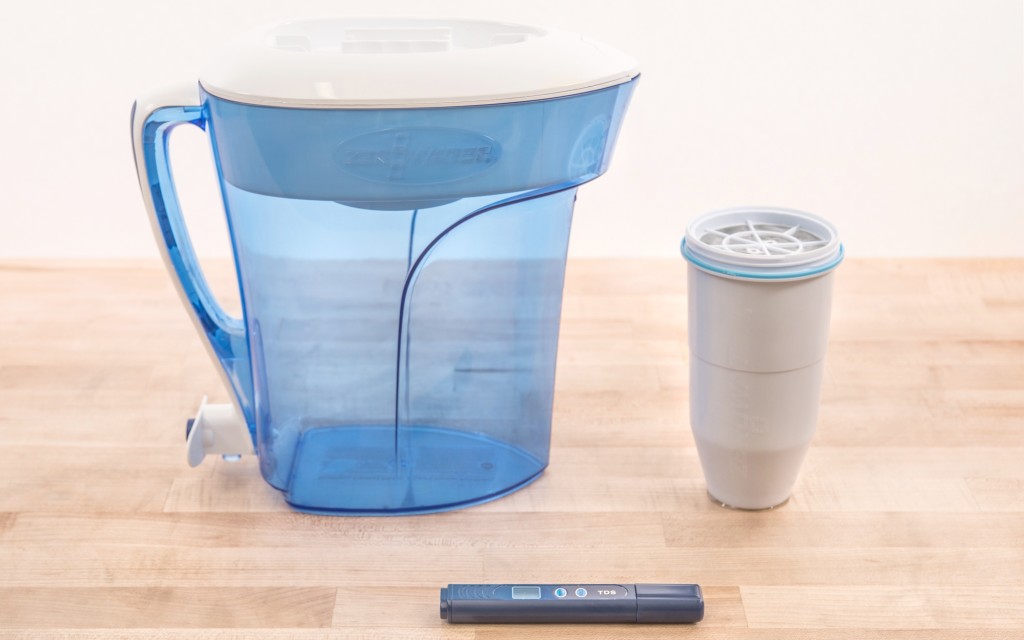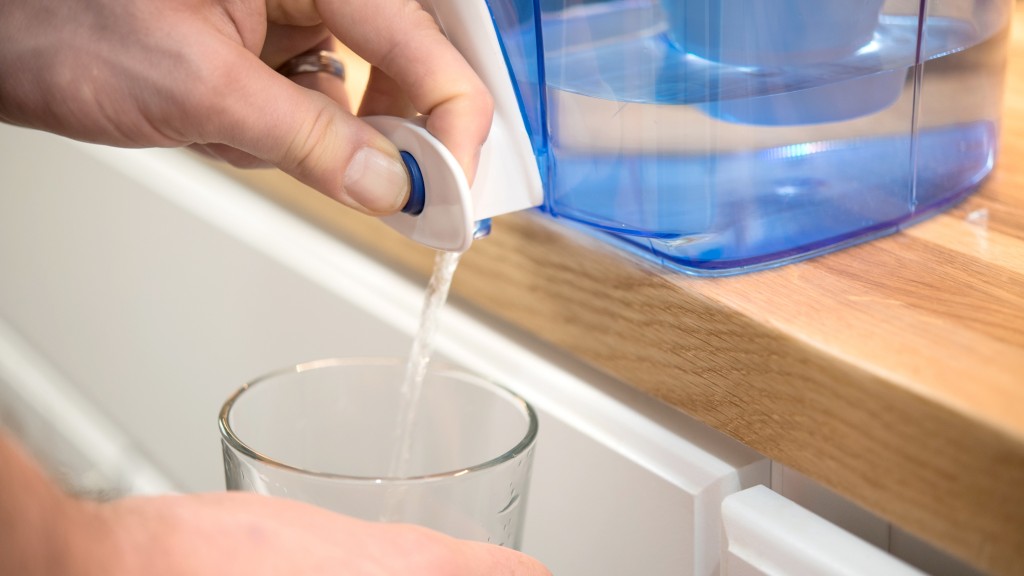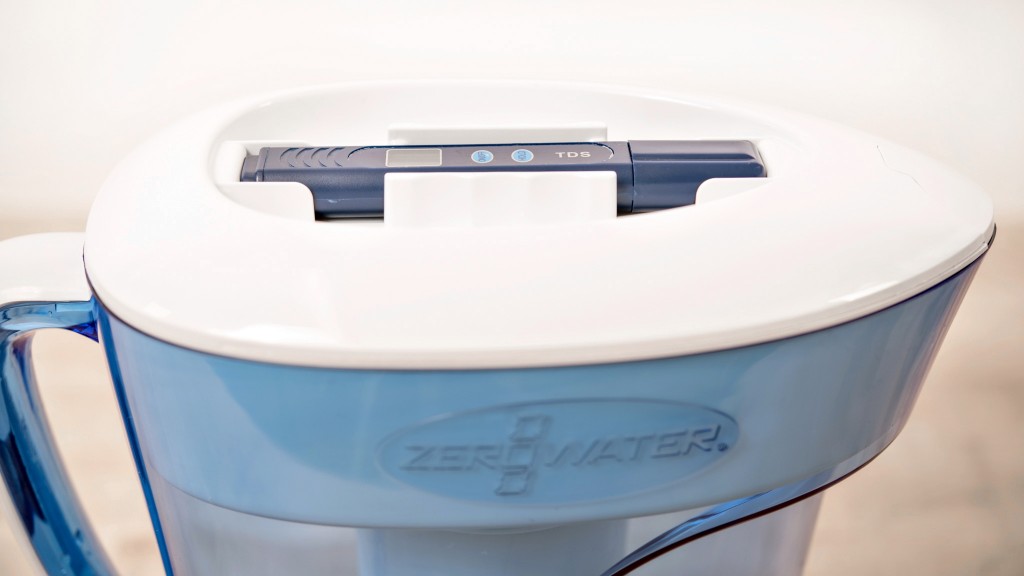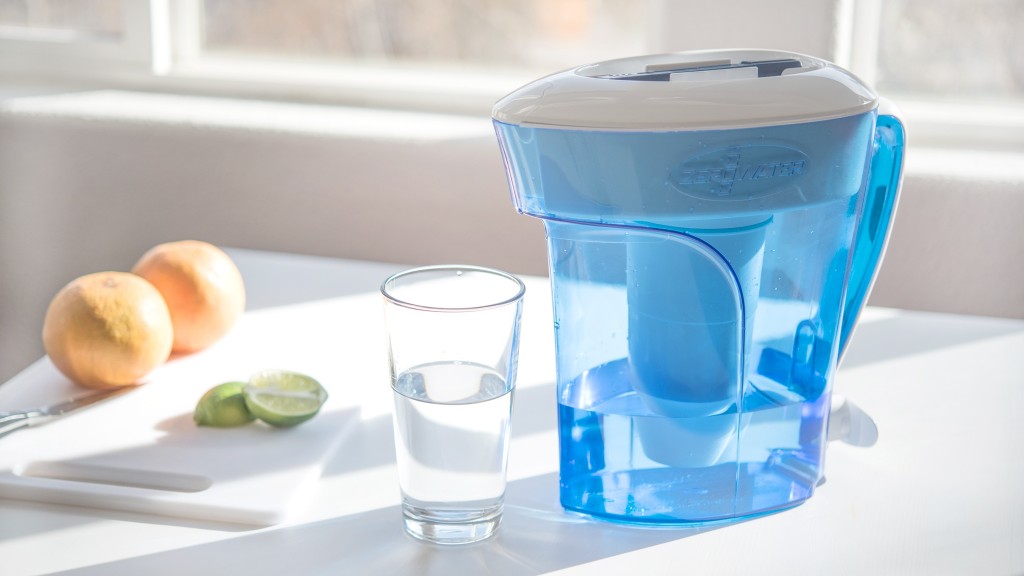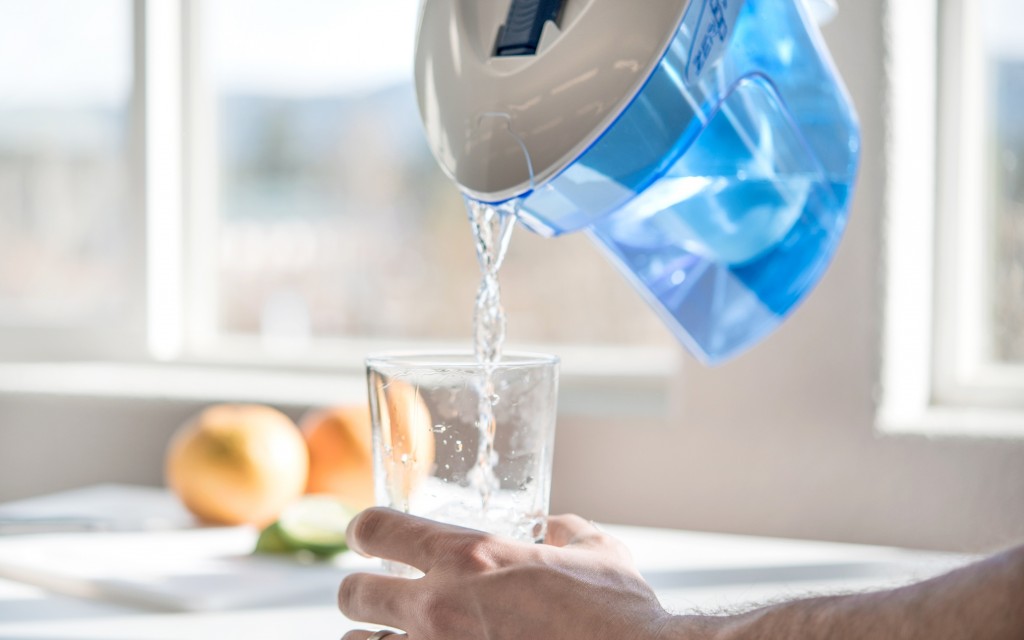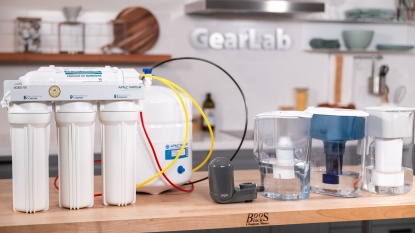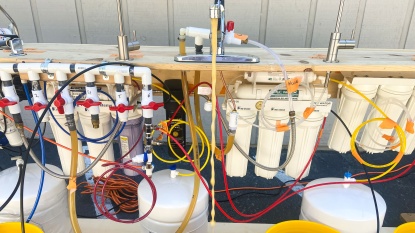ZeroWater 10-Cup Pitcher Review

Our Verdict
Our Analysis and Test Results
The ZeroWater finished a few points ahead of the next closest competitors, the Home Master HydroPerfection and the iSpring RCC7. This pair of second-tier filters are both under the sink and cost significantly more. They matched the ZeroWater at extracting lead and chlorine from water, but couldn't compare in our mineral extraction test. However, the Home Master did score better in our flow rate test, as the ZeroWater had to be refilled before it could fill our quart test container.
Lead Removal
The ZeroWater did an excellent job, dropping the concentration of lead from 2.3 ppm to 0.002 ppm — well below the EPA standard of 0.015 ppm. This translates to removing 99.91% of the lead, putting it in the top tier of filters: the APEC Essence, the APEC WFS-1000, the iSpring RCC7, and the Home Master HydroPerfection.
Chlorine Removal
We conducted two distinct tests for this metric: the first with water chlorinated to exceptionally high levels—on the order of 1300-1400 ppm—and the second with the water chlorinated to more moderate levels—on the order of 20-50 ppm. We used our Total Dissolved Solids (TDS) meter to determine these values, which is why we report a range rather than an exact value, as we found it to vary slightly with each reading we took.
For the test with the high concentration of chlorine, the ZeroWater removed practically all of the chlorine, with only trace amounts remaining. The test strips failed to register any readings, and the TDS meter only indicated about 5 ppm. The ZeroWater completely removed all chlorine in the moderate concentration test, with neither the TDS meter nor the test strips registering anything above 0 ppm.
Salt Removal
To score this, we dissolved copious amounts of table salt in the supply water, then ran the saltwater through each filter. The ZeroWater again did an exceptional job, earning the top score of 10 out of 10.
The water supply for this test measured approximately 445 ppm on our TDS meter. The ZeroWater system removed all the chlorine from the water, as indicated by a TDS meter reading of zero parts per million.
Taste
First, we ran purified water through the ZeroWater to see if it imparted any negative flavors or other tastes. Our panel of tasters gave the ZeroWater top marks, as the water came out just as crisp and clear as when it was put in.
For the second test, we created a mixture of exceptionally foul-tasting water using salt and chlorine — which was definitely considered undrinkable by our panel of unfortunate taste testers. We ran this through each filter, then had our panel taste and score each glass of the filtered water, without knowing which filter produced it. We also included a glass of purified water and a glass of the supply. The ZeroWater was one of the favorites, producing water that tasted great and ranked on par with the clean water.
Flow
The ZeroWater was one of the fastest at actually pouring the water, but is one of the slowest to fill the quart container. This product only has a 10-cup capacity, so it took substantial time to refill and filter enough water to top off the container.
Value
The ZeroWater is an amazing value and definitely a product worth considering when shopping on a budget. This product outperformed other filters that cost over ten times as much in our tests, delivering one of the best overall performances we have seen from a water filter to date.
Conclusion
If you are looking for clean, clear, and great tasting water, look no further than the ZeroWater. This is one of our favorite filters that we have tested and earned some of the highest marks in all of our impurity removal and taste tests. Unfortunately, it doesn't have the largest capacity and can take a bit of time to refill, but for how inexpensive this product it, you can always buy a second one if you really can't wait and need the extra capacity. All in all, this is definitely one of the best water filters you can buy and should be on your short list when shopping for a new water filter.


